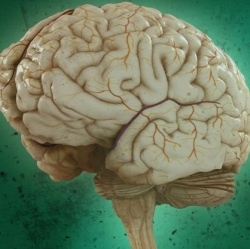
Researchers have been trying to find a way to see inside the brain to better understand how different structures work together. Now, researchers have developed a method that could help answer questions about diseases like Alzheimer’s.
Scientists often clear and stain tissues to understand how bodies work. Chemicals render the skin and outer tissues invisible, and dye the structures of interest. But these chemicals often damage the delicate structures that researchers are trying to study in the first place.
The ScaleS technique uses two chemicals to clear tissues: sorbitol, a sweet-tasting sugar alcohol found in fruits, corn, and seaweed; and urea, an organic compound that the body usually expels in urine. Brains that the researchers soaked in this solution became see-through and, unlike those exposed to similar solutions, didn’t become mushy, which meant that researchers could still cut them into micron-thick slices and look at them through a microscope. When left to soak in the ScaleS solution, samples can last for at least a year without being damaged.
The researchers tested this technique on the brains of mice that had Alzheimer’s. They combined the sorbitol and urea solution with another chemical that illuminated the notorious amyloid beta plaques, which build up as part of the disease (though no one is quite sure why), then tooks scans to make 3D models. Then they used the ScaleS solution on brain tissue samples from human Alzheimer’s patients to better understand how the plaques fit in with normal brain cells. The researchers were surprised to find that the plaque cells clustered close to microglial cells, which are neurons’ immune defense, but only in the early stages of the disease.
The researchers anticipate that the ScaleS method can be a useful and effective way for researchers to better understand diseases that affect the structure of the brain, such as Parkinson’s and Huntington’s disease, neither of which currently has a cure. Though the brain is clearly the most immediate target for this method, it could also be used to better understand diseases elsewhere in the body where cells fit together in a unique way, such as the heart, lungs, or intestines.
